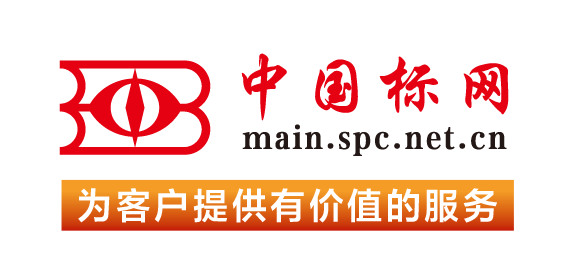【国外标准】 Standard Guide for Determining Net Environmental Benefit of Dispersant Use
本网站 发布时间:
2024-02-28
开通会员免费在线看70000余条国内标准,赠送文本下载次数,单本最低仅合13.3元!还可享标准出版进度查询、定制跟踪推送、标准查新等超多特权!
查看详情>>
适用范围:
2.1 Net Environmental Benefit Analysis (NEBA) applied to oil spill response is the process of considering advantages and disadvantages of different spill response options (including no response) to arrive at a spill response decision resulting in the lowest overall environmental and socioeconomic impacts.2.2 Spill response will likely involve some combination of response options. There are no response methods that are completely effective or risk-free. NEBA should be conducted with appropriate regulatory agencies and other organizations as part of spill contingency planning. NEBA is important for pre-spill planning since some response options have a limited window of opportunity.1.1 This guide covers considerations in determining net environmental benefit of dispersant use on oil spills. This guide is applicable to both surface and sub-surface application. The purpose of this guide is to minimize environmental and socioeconomic impacts of oil spills.1.2 Net environmental benefit analysis (NEBA) should be conducted as part of oil spill contingency planning.1.3 There are many methods to control, cleanup or treat oil spills. Dispersants should be given equal consideration with other spill response options.1.4 Only general guidance is provided here. For the purposes of this guide, it is assumed that the crude or fuel oil is dispersible to some extent. The dispersant is also assumed to be relatively effective, applied correctly, and in compliance with relevant government regulations. Differences between commercial dispersants or between different oils are not considered in this guide.1.5 This guide applies to marine and estuarine environments only.1.6 When making dispersant use decisions, appropriate government authorities should be consulted as required by law.1.7 This standard does not purport to address all of the safety concerns, if any, associated with its use. It is the responsibility of the user of this standard to establish appropriate safety, health, and environmental practices and determine the applicability of regulatory limitations prior to use.1.8 This international standard was developed in accordance with internationally recognized principles on standardization established in the Decision on Principles for the Development of International Standards, Guides and Recommendations issued by the World Trade Organization Technical Barriers to Trade (TBT) Committee.
标准号:
ASTM F2532-19
标准名称:
Standard Guide for Determining Net Environmental Benefit of Dispersant Use
英文名称:
Standard Guide for Determining Net Environmental Benefit of Dispersant Use标准状态:
Active-
发布日期:
-
实施日期:
出版语种:
- 推荐标准
- ASTM 51401-21 Standard Practice for Use of a Dichromate Dosimetry System
- ASTM 51956-21 Standard Practice for Use of a Thermoluminescence-Dosimetry System (TLD System) for Radiation Processing
- ASTM A1010/A1010M-24 Standard Specification for Higher-Strength Martensitic Stainless Steel Plate, Sheet, and Strip
- ASTM A1016/A1016M-24 Standard Specification for General Requirements for Ferritic Alloy Steel, Austenitic Alloy Steel, and Stainless Steel Tubes
- ASTM A105/A105M-24 Standard Specification for Carbon Steel Forgings for Piping Applications
- ASTM A1064/A1064M-24 Standard Specification for Carbon-Steel Wire and Welded Wire Reinforcement, Plain and Deformed, for Concrete
- ASTM A108-24 Standard Specification for Steel Bar, Carbon and Alloy, Cold-Finished
- ASTM A1080/A1080M-24 Standard Practice for Hot Isostatic Pressing of Steel, Stainless Steel, and Related Alloy Castings
- ASTM A1090/A1090M-19(2024) Standard Specification for Forged Rings and Hollows for Use as Base Plates in Power Transmission Structures
- ASTM A1115/A1115M-24 Standard Practice for Construction of Mechanically Stabilized Earth Walls with Inextensible Soil Reinforcement
- ASTM A1128-24 Standard Specification for Stainless Steel Shielded, Rubber Gasketed Couplings Having an Integral Restraint Feature for Joining Hubless Cast Iron Soil Pipes and Fittings Where External Restraint Is Required
- ASTM A179/A179M-24 Standard Specification for Seamless Cold-Drawn Low-Carbon Steel Heat-Exchanger and Condenser Tubes
- ASTM A234/A234M-24 Standard Specification for Piping Fittings of Wrought Carbon Steel and Alloy Steel for Moderate and High Temperature Service
- ASTM A242/A242M-24 Standard Specification for High-Strength Low-Alloy Structural Steel
- ASTM A249/A249M-24a Standard Specification for Welded Austenitic Steel Boiler, Superheater, Heat-Exchanger, and Condenser Tubes
 我的标准
我的标准 购物车
购物车 400-168-0010
400-168-0010














